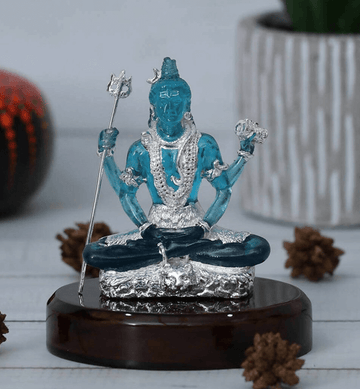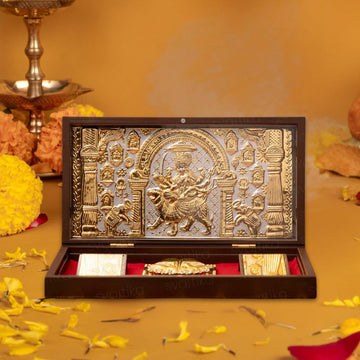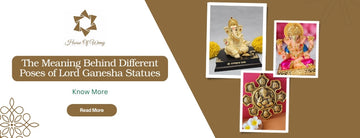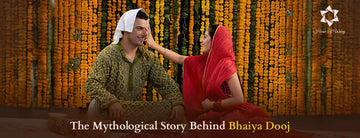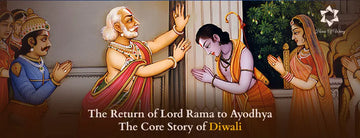Discover the spiritual and hidden Lord Ganesha statue Meanings
Introduction: The Symbolism of Lord Ganesha in Hinduism
If you’ve walked into a home filled with love and tradition, decorated with the smell of incense, and more than likely a peaceful Lord Ganesha statue in a corner gazing kindly at you, have you sometimes wondered why his trunk is curving to the left in some homes, or why is he dancing in a joyous posture in another? Each pose, expression, and ornamentation of Shri Ganesha has a deep spiritual meaning beyond its aesthetic purpose.
In our Hindu religion, Ganesha is believed to be the remover of obstacles. He is the god of beginnings and the giver of wisdom. He is not just a God; he is a philosophy. It is at such times; we must adopt the Spiritual meaning of Ganesha, particularly when life becomes very hectic, making us feel detached from our roots.
Whether you're a Ganesha devotee, a balancer and curiosity-seeker, or you are adorning a new home with thoughtful and devotional intent, this guide will assist you in revealing the divine meanings of each of the several poses of the Lord Ganesha Statue meanings.
1. The Traditional Ganesha Pose: The Classic Elephant God

The conventional form of Lord Ganesha is typically sitting, relaxed, with a bloated belly and big ears, with an expression of calm wisdom. This traditional pose symbolizes a whole being in equilibrium, happy, and wise. According to the Puranas, the form of Ganesha is the symbol of all that there is:
- Elephant head: Signifies wisdom, strength, and intelligence
- Large ears: Listen more
- Small eyes: Concentrate deeply
- Pot belly: Accept and digest both the bitter and sweet experiences of life
This is a great pose for homes, offices, or altars needing calm, grounded energy. Among the many types of Ganesha statues, this one is best suited for invoking peace and stability.
2. Shri Ganesha With Right Hand Raised: Symbol of Blessings

Lord Shri Ganesha is usually represented with his right hand raised in blessing or "Abhaya Mudra,". It is a protective gesture of reassurance and divine blessings. This is the ideal pose for:
- New beginnings, like housewarmings or weddings
- Seeking courage during challenging times
- Spaces where blessings and positivity are needed
This hand position is more than symbolic; it mirrors what the Rig Veda says, “Let your hands be engaged in giving.” In return, Ganesha gives fearlessness. This is one of the important Ganesha mudras explained through both scripture and tradition.
3. Ganesha Holding a Modak: Significance of the Sweet Offering

The sweet Modak, held lovingly in Ganesha’s hand or placed near him, is no ordinary dessert. It represents the ultimate reward of a disciplined life, inner bliss.
- Spiritual meaning: The inner sweetness that comes from spiritual pursuit
- Symbolism: Encourages devotion, self-control, and reward through inner satisfaction
According to the Ganapati Atharvashirsha, “He loves the Modaka because it is sweet and made of simple ingredients just like the soul that seeks truth with humility.” Such stories add to the deep Ganesha idol significance in our lives.
4. The Trunk in Different Directions: What It Represents

The direction of Ganesha’s trunk holds profound spiritual significance:
- Left-trunk Ganesha: Symbolizes calmness, the Moon energy (Ida Nadi), and is more suitable for home worship
- Right-trunk Ganesha: Symbolizes Sun energy (Pingala Nadi), strict discipline, and is only worshipped under specific rituals
- Straight trunk: Represents balance and mastery over both energies
Right trunk vs left trunk Ganesha has always been a spiritual consideration for selecting the appropriate idol.
Choose wisely: For a peaceful family life, the left-curved trunk is recommended. For spiritual discipline and austerity, the right-curved trunk Ganesha is appropriate.
5. Lord Ganesha Sitting with One Leg Folded: Symbolizes Balance

When Shri Ganesha is portrayed seated with one leg bent and the other leg grounded, it symbolizes living within the material world with a firm root in the spiritual plane.
- Bent-legged (Ganesha's) seat: Represents thoughts, focus, and meditation on the inner plane.
- Grounded leg (Ganesha's) seat: Represents engagement and participation in world duties.
This particular Ganesha sitting standing postures style can help inspire those seeking balance between outer action and inner awareness.
6. Ganesha with Snake Around His Belly: What does it signify?

The snake around Ganesha's belly signifies mastery over desires or the protection of your core energy.
In the yogic tradition, the snake symbolizes the Kundalini. The dormant spiritual energy that coiled at the base of your spine. Ganesha embodies that he has mastered it.
- The snake also represents his/her ability to contain the whole universe. The belly is the universe.
- Ganesha teaches practitioners to practice self-restraint and discipline.
7. The Ganesha Holding a Lotus: The Significance of Purity and Spiritual Progress

A lotus in Ganesha’s hand signifies spiritual enlightenment coming, pure and kind, rising above, mud of materialism.
- Lotus flower: Detachment, beauty, spiritual elevation
- Scriptural: The Padma Purana mentions it as the seat of divine wisdom
This form is suitable for meditation spaces, yoga studios, or study areas where the purity of thought is revered. It perfectly fits the Ganapati statue guide for spiritual settings.
8. The Dancing Ganesha: Celebrating Spirit and Joy

The Dancing Ganesha, or Nritya Ganapati, is a gentle reminder that divine presence is not always solemn, but dances with life!
- Joy, movement, cosmic rhythm
- It invites us to live life as a celebratory practice, rather than an anxious one.
- Perfect for creative and expressive homes or festive settings
The Shiva Purana speaks of Ganesha dancing in great celebration to the rhythm of the cosmos, holding the message of joy being divine. This is one of the most joyful Hindu deity poses meaning representations.
9. Ganesha with Mouse (Mooshak): The Relationship

The little mouse, Mooshak, is Ganesha's vahana (vehicle), which has a very rich metaphorical meaning.
- Mouse: Restless mind or ego
- Ganesha riding: Mastery of ego and desires
- As well as nothing being too small to serve the divine
In a contemporary sense, this reminds us to learn how to tame our thoughts and direct them towards something more divine.
10. Ganesha with Multiple Arms: Symbol of Divine Potential

Some representations of Ganesha will show him having 4, 6, or 8 arms. Each arm holds a different object, such as an axe, rope, lotus, or goad. Each item has its own meaning:
- Axe (Parashu): cuts attachments
- Rope (Pasha): pulls devotees to the truth
- Lotus (Padma): enlightenment
- Goad (Ankusha): Keeps our mind focused on righteousness.
This position symbolizes the idea that the divine can multitask without struggle, and that we should really be focused on purposeful action. Such iconography is rich in Ganesha pose symbolism.
11. Ganesha with a Broken Tusk: The Meaning of This Iconography

Ganesha's single tusk is among his most unique physical features. According to the Mahabharata, Ganesha broke his own tusk to write continuously when Vyasa needed a scribe for the epic.
- Symbolism: Sacrifice for a higher cause
- Philosophy: Letting go of pride to fulfill dharma
This pose inspires us to be selfless and committed to a greater good, even at personal cost.
How to Choose the Right Ganesha Pose for Your Home or Altar
Here’s a simple guide:
- For peace and harmony: Seated Ganesha with left-curved trunk
- For new beginnings: Standing or blessing Ganesha
- For knowledge seekers: Ganesha with a lotus or a modak
- For creativity and celebration: Dancing Ganesha
- For spiritual depth: Right-trunk or snake-belly Ganesha
The House of Wemy offers a thoughtfully curated range of handcrafted Ganesha statues, each selected for its spiritual resonance. Choose one that aligns with your current life path or spiritual goal.
Integrating Ganesha’s Symbolism into Modern Life
In today’s digital world, where mindfulness is often replaced by multitasking, Ganesha serves as a grounding force. Place him on your work desk to guide decision-making. Let him bless your living room with calm. Keep him in your child’s room as a protector and guide.
Even for those living away from India, a lord ganesha statue becomes a spiritual anchor connecting you to your roots, your family, and your faith.
Astrology and Numerology Insights
-
Astrologically, Wednesdays are considered ideal for Ganesha worship, aligning with Mercury’s influence on intellect and clarity.
-
Numerologically, the number 3 is linked to Ganesha. Three represents balance: mind, body, and spirit.
Placing a Ganesha statue in the northeast (Ishanya) corner of your home enhances positivity, clarity, and prosperity.
Community & Emotional Connection
Growing up, many of us remember our grandparents gently placing Ganesha idols on mantaps during Ganesh Chaturthi, teaching us to offer durva grass and chant “Om Gan Ganapataye Namah.” That legacy continues today in the hearts of Indians worldwide. Ganesha unites us across generations, geographies, and beliefs.
Share your own Ganesha memories with your children. Let the next generation know that these idols aren’t just decoration, they are wisdom in form.
Final Thoughts
Every pose of Lord Ganesha holds a secret, a teaching, a blessing, a reflection of life itself. By choosing the right statue and understanding its meaning, you're not just decorating a space. You're inviting divinity into your home, heart, and daily practice.
Which form of Ganesha speaks to you the most? Is it the joyful dancer, the blessing hand, or the thoughtful scribe with a broken tusk?
Explore the House of Wemy’s collection of spiritually significant Ganesha idols and let the perfect one find its way to your sacred space.

